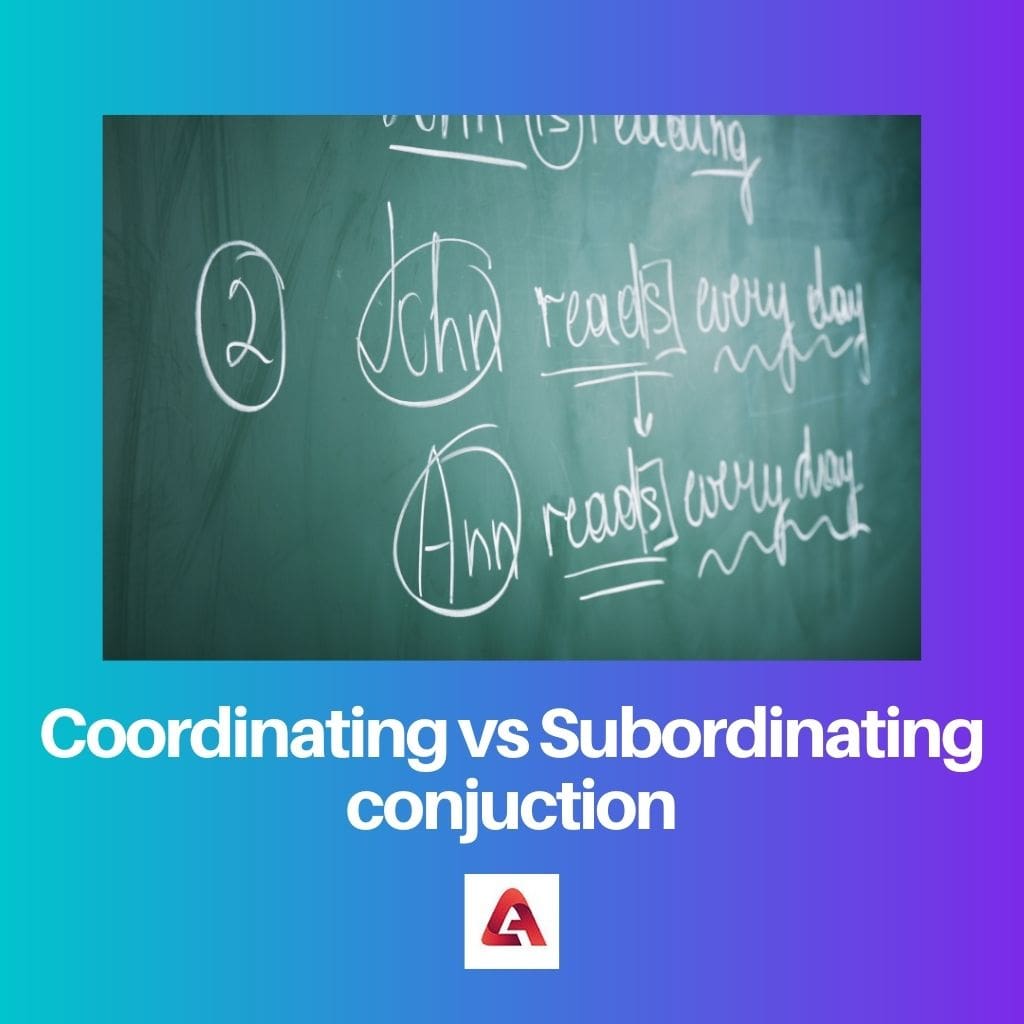English is an immersive language. There are many grammatical rules to follow to become an influential writer and a coherent speaker.
One such important part of speech is conjunction. Conjunction joins phrases, clauses, and other parts of a sentence.
Conjunctions are of three types – correlative, coordinating, and subordinating. Among these, the correlative conjunctions are always used in pairs. They relate two different possibilities in a sentence.
Key Takeaways
- Function: Coordinating conjunctions connect words, phrases, or clauses of equal importance, whereas subordinating conjunctions introduce dependent clauses.
- Sentence structure: Coordinating conjunctions create compound sentences while subordinating conjunctions form complex sentences.
- Examples: Coordinating conjunctions include “and,” “but,” and “or”; subordinating conjunctions include “because,” “although,” and “since.”
Coordinating vs Subordinating Conjunction
The difference between coordinating and subordinating conjunction is that a coordinating junction joins two grammatically equivalent clauses, whereas a subordinating meeting joins an independent and a dependent clause.

Coordinating conjunctions join phrases and clauses that are mutually independent of each other. Examples of coordinating intersections are – and, yet, and but.
Subordinating conjunctions join one independent and other dependent phrase or clause. Some examples of subordinating conjunction are – although and because.
Comparison Table
| Parameter Of Comparison | Coordinating Conjunction | Subordinating Conjunction |
|---|---|---|
| Definition | Coordinating conjunctions are used to join two equivalent clauses or words. | Subordinating conjunctions join two clauses or words that are not grammatically equivalent. |
| Type of Sentence | Coordinating conjunctions join two parts of a sentence to make it a compound one. | Subordinating conjunctions join two parts of a sentence, making it complex. |
| Identity of Joint Clauses | The clauses are capable of independent existence. | The main clause is capable of independent existence, while the subordinate clause is not. |
| Position within the Sentence | Coordinating conjunctions are placed between the clauses they join. | Subordinating conjunctions are placed at the beginning of the subordinate clause. |
| Examples | Examples of coordinating conjunctions are and, or, but and yet. | Examples of subordinating conjunctions are because, although and unless. |
What is Coordinating Conjunction?
A coordinating conjunction joins words, phrases, or clauses that are syntactically equivalent. So, there exists only a main clause and no dependent clause.
A compound sentence is formed when we join two clauses using a coordinating conjunction. These conjunctions can be placed between the clauses or at the beginning of a sentence.
The general structure of the sentence is as follows:
Main Clause + coordinating conjunction + Main clause
Coordinating conjunctions are seven in number. These are – and, or, nor, for, yet, but, and so.
Examples :
- Robert and Davis are heading towards the market.
- You can download the form from the site or fetch it from a kiosk.
- I am driving fast, but I can’t reach on time.
- He was an enemy, yet I gave him water when he died.
However, one should keep the following rules in mind while using a coordinating conjunction :
- Do not use a comma between the words joined using the coordinating conjunction.
- Remember to use a comma to separate independent clauses in the sentence.
What is Subordinating Conjunction?
A subordinating conjunction joins words, phrases, or clauses that are not grammatically equivalent. One is a main clause, and the other is a dependent or subordinate clause.
The subordinating conjunction is placed before the subordinate clause, and the sentence so formed is complex. The general structure of the sentence is as follows:
Main Clause + subordinating conjunction + Subordinate clause
The different subordinating conjunctions are because, although, since, etcetera. Some of these conjunctions provide a reason for an action, while others tell about the contrasting nature of a situation.
Examples :
- I didn’t go to the mall because my parents were visiting my house.
- Although I made the cake, I have no interest in eating it.
- Jack said that he wouldn’t attend the function unless Harry apologized.
The following are some important rules to remember while using a subordinating conjunction :
- The main clause should provide a meaningful reference to the subordinate clause.
- A comma should be used after the subordinate clause if it appears at the beginning of a sentence.
Main Differences Between Coordinating and Subordinating Conjunction
Conjunctions are vital components of a meaningful sentence. Without them, a sentence appears incomplete.
A common avoidable mistake is an interchange of coordinating and subordinating conjunctions in a sentence. The main differences between the two are
- A coordinating conjunction joins syntactically equivalent parts of a sentence, whereas a subordinating meeting joins syntactically different parts.
- Coordinating conjunction appears in a compound sentence, whereas a subordinating intersection appears in a complex sentence.
- Coordinating conjunction links two independent clauses. On the other hand, a subordinating conjunction joins an independent and a dependent clause.
- A coordinating conjunction is placed between the clauses, whereas a subordinating conjunction is placed before the dependent clause.
- A sentence that uses a coordinating conjunction is easy to comprehend. On the other hand, a sentence that uses a subordinating meeting can be hard to understand if appropriate punctuation is not used.

I wholeheartedly disagree. The article is too wordy, and the point it’s trying to make can be said in a condensed manner.
I think the humorous examples used to illustrate coordinating and subordinating conjunctions made the article an enjoyable read.
I never thought the importance of conjunctions could be so profound! This article does a great job of clearly explaining the concept and different types of conjunctions.
Thanks for the comprehensive breakdown of the types of conjunctions. I found it enlightening.
The rules for using coordinating and subordinating conjunctions were very helpful. I’ll definitely be keeping these in mind for my future writing.
I appreciate the detailed comparison between coordinating and subordinating conjunctions. It really helped clear up some confusion I had.
This article seems unnecessarily long. I think the concept could have been explained much more concisely.
I think this article does a good job explaining the differences between coordinating and subordinating conjunctions. I’ll be keeping these in mind for my future writing.
All this talk about conjunctions is making my head spin. I’m not sure how much of this I’ll actually retain.
This article seems like an overkill, too many rules and structures. A simpler explanation might suffice.